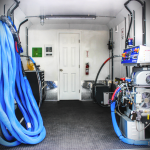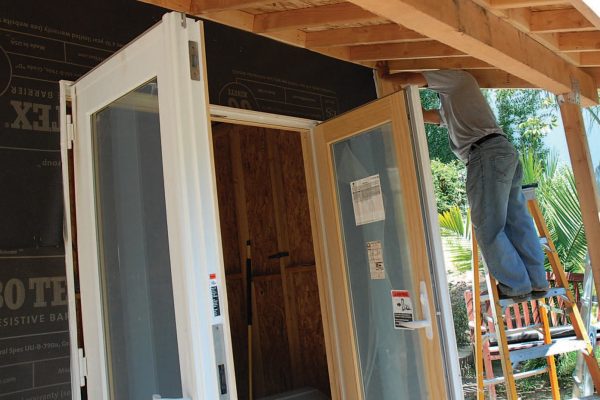No matter what business you are in, inventory will be one of your vital assets. In fact, the survival of your business hinges significantly on your inventory as it allows you to fulfill your commitments to your clients.
For restaurants, maintaining an accurate record of inventory can spell the success or failure of the establishment. Unfortunately, many restaurant owners and their managers do not fully grasp the importance of regularly taking inventory, thinking of it as a dull and monotonous task that can be set aside for another time.
Although taking inventory is unpopular in the restaurant industry, the accuracy of your inventory record is closely tied to your profit.
Table of Contents
What should you include in your inventory?
Your restaurant’s inventory is not only comprised of food items prepped for serving to your customers. Your inventory also includes ingredients, drinks, straws, napkins, plastic utensils, etc.
Also Read: How to use Artificial Intelligence for better inventory management?
You should be aware of how much of each of these your restaurant consumes in a day, as well as the prices of each and how the costs of your inventory factor into your menu prices. Furthermore, awareness of the average consumption of these goods will facilitate the efficient re-ordering of these items.
How often should you take inventory?
Ideally, you should conduct daily, weekly, monthly, and quarterly inventory. Performing regular inventory allows you to enjoy two fundamental benefits. First, you keep the costs of these products lower, and second, you ensure that the items you serve use only fresh ingredients.
Make it a habit to track your restaurant’s usage of perishable goods daily. This will help you have an accurate picture of what sells well and what does not. In turn, this allows you to make the necessary adjustments when re-ordering.
Furthermore, a daily inventory can help you discourage restaurant staff theft. You can conduct your daily inventory before opening or after closing. Do not perform the inventory while your establishment is open as this will make it difficult to track inventory movement.
Apart from conducting a daily inventory, strive to perform a weekly inventory at least four times a month. This inventory can coincide with your weekly deliveries. Check if your deliveries match with your orders and then count all your new stock as you place these on the shelves.
For your monthly inventory, your goal is to find rarely used items. This is also an opportune time to adjust your orders if you have upcoming events for the month.
Quarterly inventories typically coincide with an in-depth cleaning of the different parts of your establishment. Be sure to include dishes and utensils, uniforms, linens, and office supplies during this inventory.
Beyond counting
Conducting regular inventories is just a part of a larger equation that is inventory management, which includes ordering, organization, and costing.
Organization is crucial for efficient inventory. Organizing your stock requires four key elements. First, you will need to have an accurate list of your current stocks. After that, you should know how much of these you use on a daily and weekly basis. Next, you should put into place a system that will allow you to track usage accurately. Finally, you should establish a system that facilitates accurate and efficient re-ordering.
An ordering system ensures that you have sufficient stock without the risk of running out of needed ingredients during crucial moments. In order to achieve this balance, you will need to establish a baseline level for each ingredient as well as an accurate system to track usage of each of these items.
Another essential practice that your restaurant staff must perform is filling out the prep sheets. This will allow you to know precisely how much ingredients to prep while minimizing staff hours and food waste.
Finally, you should regularly calculate the cost of goods sold. This will give you an accurate picture of the performance of your restaurant. You can calculate this by adding together your beginning inventory and purchases and then subtracting the cost of your ending inventory.
After computing for the value of goods sold, you can now compute for the food cost percentage. To calculate for this, divide the cost of goods sold by the sales made for a specified period. Knowing your food cost inventory will help you identify where your high food costs are coming from.
Consider automation
Fortunately, you do not have to do everything manually. With an all-in-one restaurant management system software for iPads, you can stay on top of a diverse array of tasks necessary to keep your restaurant up and running in an efficient manner.
Such an app performs multiple functions, including inventory management. You can easily monitor your restaurant’s stocks remotely and in real time. You can track stock levels accurately for every ingredient with your fingertips.
Additionally, this app enables you to know the status of ingredients, including which ones are damaged or near expiry. This, in turn, allows you to know exactly how much to re-order.
AUTHOR BIO
Ahmad Alzaini is the co-founder and CEO of Foodics, a fast-growing foodtech startup. A businessman by nature, Alzaini is an app aficionado, developing businesses in Saudi Arabia within several industries. Today, Foodics has extended to new markets across the MENA region, processing over 1 billion transactions, and offering the latest technology in POS and restaurant management.











